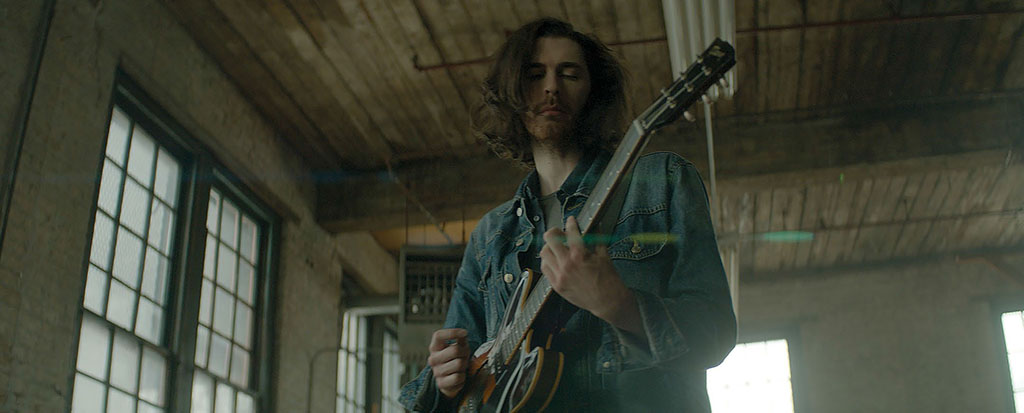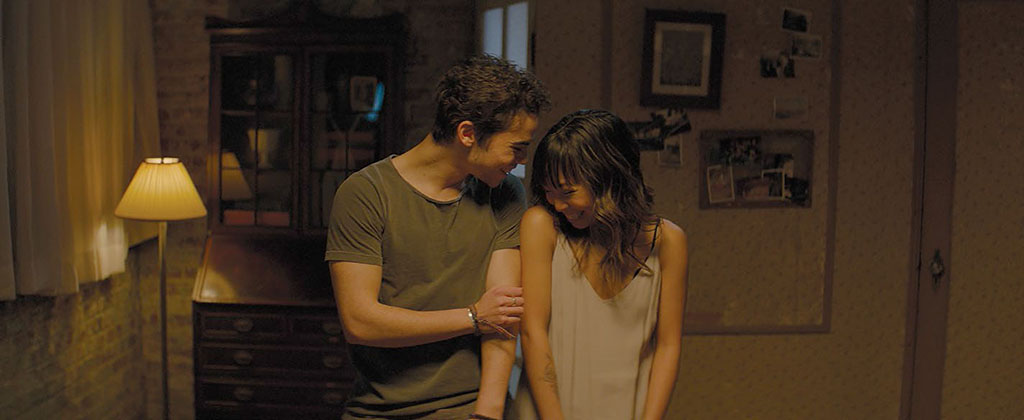Rooted in Realism
A lot of my projects are “raw and real” character pieces that don’t call for super-stylized lighting. My approach is often rooted in realism.

Music videos are where I tend to be able to play the most. One video that was actually pretty minimalistic was Hozier’s “Almost (Sweet Music).” Alongside an incredible director and friend, Blythe Thomas, we set out to capture what was essentially a celebration of timeless performers and of music. We photographed different performers in different rooms—a total of seven and all in one shoot day.
Why I would choose to talk about a simpler, naturalistic music video instead of one that was super-stylized is because invisible cinematography is actually very advanced. That is where you know how to build a scene in terms of units and, more importantly, take advantage of the space you are in.
OBSERVATION
When I use a realistic approach in my cinematography, I typically start by observing the space and what it has to offer—windows, practicals, etc. For the video, everything was shot in a large warehouse in New York City and not only had great character but lots of natural light. For the daylight scenes, I leaned on them. Tracking the sun is key for this—I had to pay attention to where it would hit the city beyond the windows and when it would come in directly through a window.

One tool I found myself utilizing more than usual was LED tube lighting. For the pianist scene, for example, all we did was rig up several daylight Quasars and soften them. My crews know you cannot get light soft enough for me. Large sources that are triple broken are my favorite and are especially handy in making things look natural. They feel like a simple return from the windows and not sourcey if you do it right.
In Hozier’s performance scene, all we did was use the ARRI Skypanel as a key and a K5600 Joker 1600W as a backlight.
The professional video industry's #1 source for news, trends and product and tech information. Sign up below.
We shot mostly during daylight and had a mix of both day and night scenes. For night, I went with the omnidirectional route and had a Jem Ball rigged up above. Then other tools such as a Skypanel S60 and Lekos went up for accents and color separation. There were also practicals in the space, which, aside from windows, are usually another starting point for putting up sources. I’ve wanted to do more top light, like in some of these night scenes, on other projects but it’s really a time issue. It’s always faster to stick up something from the ground than rigging or menace arming and then skirting, etc. a source from above.
It was also about 90% Steadicam, so we used furniture and flats to hide stands when we could not take the time to rig or arm out something. Again, we did everything in a day, so an organic, minimalistic approach was not only appropriate but a time saver. Having enough crew to leapfrog into the next setup so I can walk on and just tweak is also key.
BLENDING IN
Color separation is something to always be thinking about. A lot of times in interior spaces, it can feel like skin tones and walls can blend in. This could be from lack of production design elements that help break up the space and pop or simply because the shot is being lit with all warmer color temperatures so everything becomes similar on screen.

In a dance sequence with Cameron Boyce and Christine Flores, we had beige wallpaper that, when lighting them with tungsten from above, would pose a threat in terms of blending their whole room and dancers together. To avoid this, we threw in two practicals that leaned more yellow and we placed a Skypanel shooting out of a small glass door in the back of the room.
I tend to shoot a lot of night scenes around 3,800K or 4,400K to also help balance out a mix of color, but it’s important to also dial in the lights. The Skypanel was warmed up a bit so as not to be too bold a blue. Otherwise, it would compete with the warmth rather than provide subtle separation.
The key to invisible lighting is, in my opinion, really understanding the space. We observe light in life all the time as cinematographers and become very quick at knowing how to recreate an environment known to the average person who lives and works in these different environments every day. We understand space and how to use it. Getting deep into the story you are telling and knowing your tools will allow you to really light invisibly while also enhancing the tone of the piece.
Julia Swain is a cinematographer based in California, whose narrative films include “Killing Animals,” “Jilted” and “Cassidy Red.” She continues to shoot on a variety of formats, seeking to create compelling visuals for every story and brand. She can be contacted throughTV Technology.
